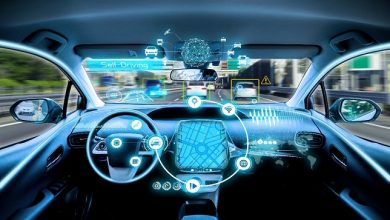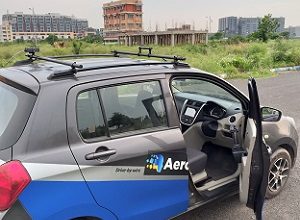The Dawn of E-Power & challenges of electromobility for Car Makers

For more than ten years, the future of electromobility seemed like a distant prospect thanks to the high prices of eCars, their low range, and the near-absence of charging infrastructure or battery research.
Today, we can confidently say that in upcoming decades this industry will change the automotive world as we know it. The question is no longer if, but when and how.
In spite of all the efforts, the global market share of eCars is still just two per cent
Technological progress is mostly focused on improving batteries, charging capacity and speed, or on the affordability of electric vehicles. But carmakers are for the most part ignoring an equally important aspect – the anxiety that most drivers experience at the prospect of switching from internal combustion engines.
Electric vehicles and batteries behave differently in traffic jams, on highways, in cold or hot weather, cannot be instantly refuelled, have different plugs from model to model, and rely on a network of charging stations that is still developing.
All these factors lead drivers to doubt the range and ease of charging of eCars, and may be inhibiting demand.
Infotainment systems seem not to be part of the technological revolution
With some exceptions, most of today’s electric cars use the same or only slightly modified software as internal combustion engine cars. This includes navigation and advanced telemetry, which is a crucial part of the solution for tackling range and charging anxiety.
We mean a modular, easy-to-integrate smart driving assistant developed specifically for electric vehicles. It consists of navigation based on individual car profiles and state-of-the-art eRouting, live traffic information and offline maps, charging-service providers and payments integration, and telemetry that provides guidance for eDrivers.
This solution is lightweight and flexible enough to be part of each car’s built-in systems, providing drivers with confidence about their range and charging, thereby easing their transition from internal combustion engine vehicles to electric vehicles by addressing these key challenges:
- The different behavior of electric motors compared to internal combustion engines
- Calculating the actual driving range
- Real-time integration of vehicle data
- Driver behavior telemetry
- Factors negatively affecting driving range (e.g. weather, battery age, climate, air-conditioning usage
- An undersized network of charging points
- The variation between charging point providers and specific conditions of use
- Cross-border travel using an international roaming solution
- Various charging modes (AC, DC) and connector types used in the charging points (Chademo, Combined Charging Standard -CCS)
- Variable charging speeds for each charging point, depending on the available electric voltage (230 V – 920 V) and maximum performance of the charging stations (from 2.5 kW up to 350 kW)
- Compatibility of the peak performance capability of the vehicle and the charging station
All of these challenges form a complex problem for electric vehicles that we call range and charging anxiety.
Range and charging anxiety – range drop
Despite the 64% growth in the number of electric vehicles worldwide in 2018, internal combustion engine cars still make up 97.8% of global sales. The automotive industry is struggling to take the next step, from innovators to mass acceptance.
There are several factors that negatively influence the range of each electric vehicle. Currently, the route is calculated assuming a fully charged battery and does not take into consideration how the driver actually drives, if they might need to temper their speed, or how fast the compatible charging points en route will be.
Navigation with predictive eRoute planning actively uses real-time information, taking into consideration several variables:
- Weather (current, forecast)
- Road topology (elevation)
- Traffic
- Driving style
- Historical data
- Charging speed
- Driver behaviour
- Driving style
Internal combustion engines are most fuel-efficient at higher speeds – up to 90 kilometres per hour (55 mph). Electric motors achieve the best results at speeds lower than 70 kilometres per hour (40 mph).
From the routing perspective, this means that if a driver navigates from point A to point B with a higher average speed, they might need to make at least a one-hour stop to fully recharge.
By avoiding highways and going via a slightly longer route at an average speed of 70 kilometres per hour (40 mph) it might, conversely, be possible to skip the charging stop and arrive directly at the destination.
For internal combustion engines, the first route will be the most time-efficient. For electric vehicles, even at the cost of more kilometres driven, the most efficient will be the second.
Author
Stefan Janciga, Vice President of Automotive Business Unit, Sygic. Sygic is a global navigation vendor, trusted by more than 200-million drivers around the world.
Published in Telematics Wire



